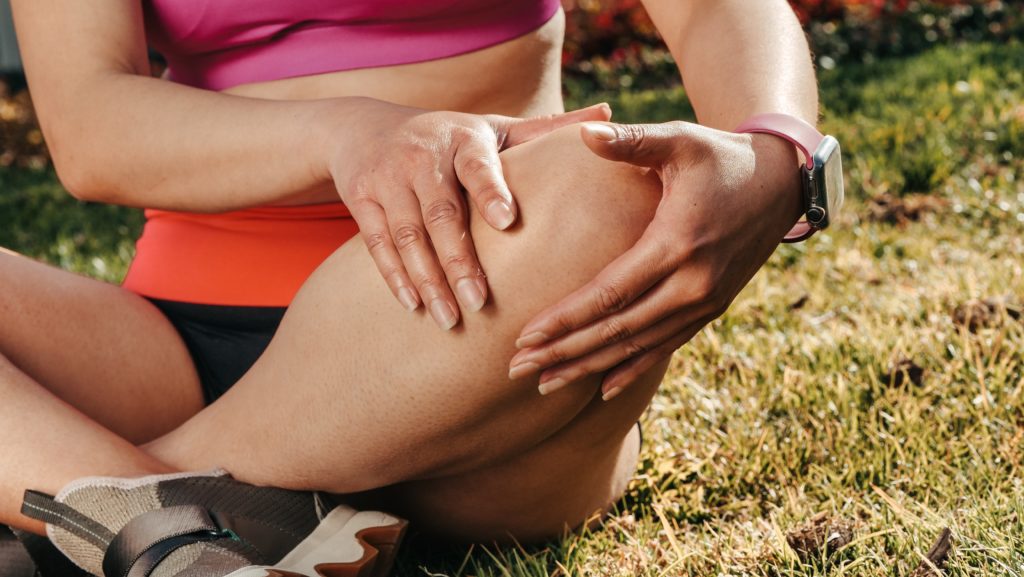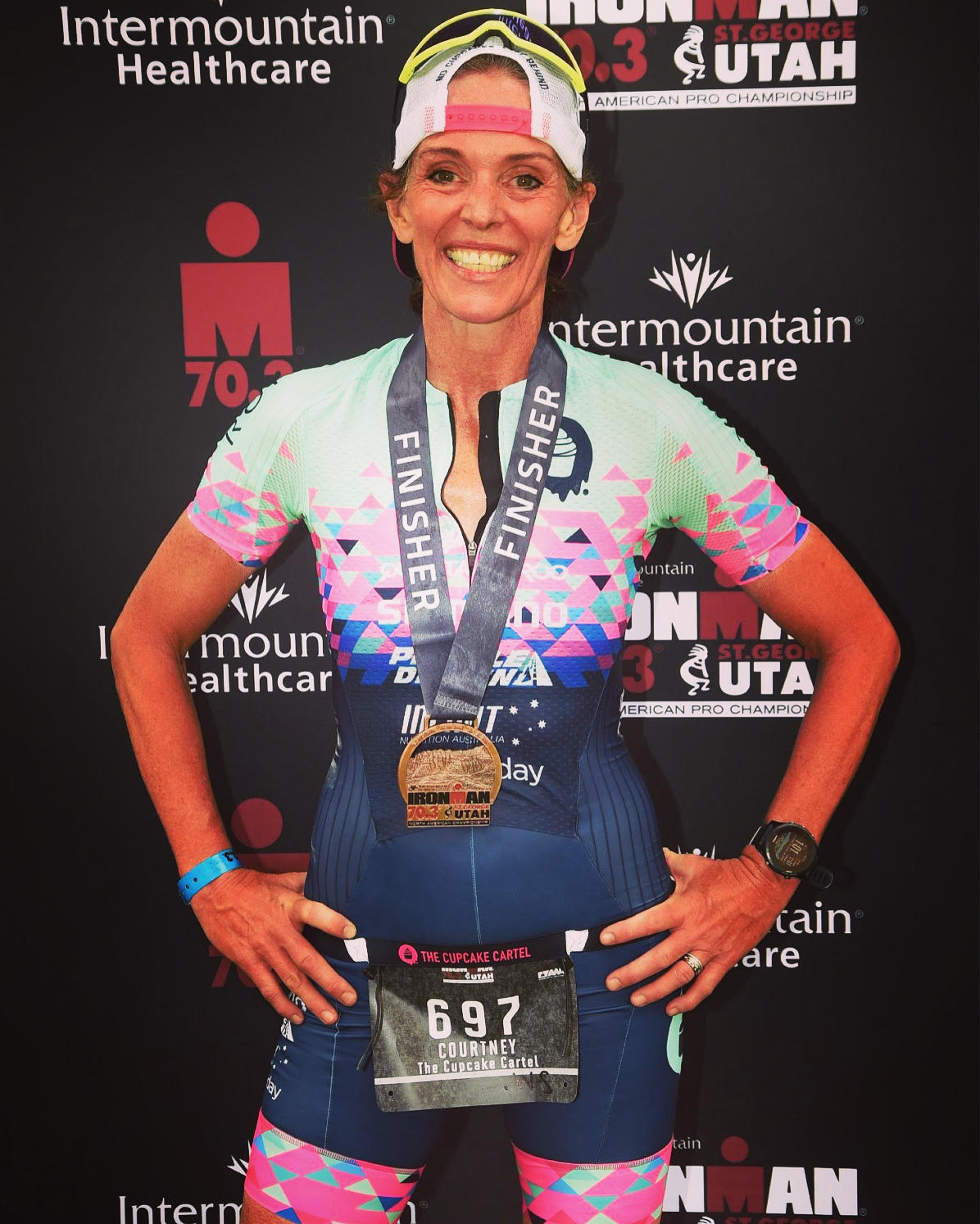Return from Injury and the Focus on the End Game

One of the true downsides to aging is the fact that our body can not bounce back from training in the way it used to as a young adult. It takes more conscious rest and recovery to return from injury and get to our start line. Trying to find balance is one of the biggest challenges endurance athletes face. Even the most seasoned triathlete struggles to get it all done. And, even with smart training and diligent planning, sometimes a little niggle can turn into a significant injury.
Running is the discipline within which most training specific and overuse injuries occur. When an athlete has a biomechanical form issue or is increasing mileage too quickly, it can be a recipe for injury if not corrected quickly and efficiently. If caught early, then mild symptoms can often be offset with reduced mileage, run gait analysis and strength training. But, even so, an injury which takes you out of sport specific training for several weeks or months can jeopardize your race. Endurance athletes notoriously have a hard time backing off training to give an injury time to heal. Injuries are frustrating and disheartening. Push too hard too soon and you risk a setback. Don’t push enough with appropriate load and intensity and you can delay recovery.
6 Tips To Help You Return From Injury
- Find the best resources for recovery. Be honest with yourself. Find the medical and therapeutic resources you need. Get your diagnosis and gather a support team around you who can help you make rational and medically sound decisions for your recovery so that your emotions do not hold you back from getting better.
- Try to focus on the positives within and around you. Positivity speeds your healing physically and emotionally. I promise you it will help motivate you and this will speed up your return from injury. Whether you are doing specific strength exercises with PT, an easy swim in the pool or cycling on the trainer this will increase blood flow to your injury and help promote healing. It will also promote an emotional feeling of well being.
- You have to walk before you run. Once your injury has healed enough and you get the okay from your medical team, it is time to start back on your road to running. But, wait! Hold on! Don’t go strapping those run shoes on and just head out the door for your normal run. You should be able to walk for 45 minutes pain free before you add any form of running to your routine. Walking will strengthen and condition the soft tissue which has been recovering.
- Be patient. For the endurance athlete who has been training consistently for years, the return to running may happen more quickly than for those who have not been running as long. This is simply a matter of fitness and physiology. You will lose conditioning in your musculoskeletal system- muscles, tendons, ligaments and connective tissue. This is where it can be tricky during the return to running. Your body needs time to adjust to new demands placed upon it after a break. Even with cross training during recovery, it may take weeks or even months for these soft tissues to get strong enough to sustain the run loads you once placed upon them.
- Cleared to Run? I recommend sticking to very short and easy walk/run workouts three times a week to begin. These workouts will be on nonconsecutive days. Choose a soft surface to run on- a track or a treadmill will be more forgiving than a road and will also allow you to stay closer to home or your car in case you have any discomfort and need to shorten your run unexpectedly. You can try 5 minutes walking for a warm up followed by 4 x 30 sec jog/2 min walk with a 5 minute walk for cool down. Ease into running slowly by adding the walk intervals from the get go and then gradually increase these run intervals each week until you are running pain free for a longer period of time. But remember the 10% rule and stick with it. Don’t increase your weekly mileage or pace by more than 10% week over week. You may need to even be more conservative than that in the beginning after a long break.
- Focus on a run specific strength and mobility program. The key here is to translate strength in the gym to your run via drills to help improve muscle coordination and biomechanics. Run form needs to be perfect as you start back into your sport to reduce the chance of re-injury. Running mechanics often fall apart as fatigue sets in with increase in distance or pace. Drills will help reinforce correct form and remind you to slow down as needed to perfect your run gait. Please make sure you are implementing mobility and core strength exercises into your program. This can come in the form of yoga, Pilates or general weight training. Start gradually if this is something new to you and be sure to enlist the help of a certified personal trainer if you need guidance in this area.
I know it’s hard but do not allow a race or other big goals to encourage you to push too hard too soon. Your aerobic engine may be ready but it takes your legs much longer than your lungs to adapt to the running stresses you will be placing on your body. Please feel free to reach out to me with any questions you might have about your return from injury. I promise I can lend you a sympathetic ear and help you get back on your way in a safe and meaningful way.

Courtney Culligan is a USA Triathlon, Slowtwitch Triathlon Run and Run Right/Freedom in the Form certified coach as well as a National Academy of Sports Medicine certified personal trainer. She lives with her husband and three sons in Evergreen, Colorado. She owns her own multisport performance coaching business, TriAptitude, LLC . Her love of teaching and coaching has provided her amazing opportunities to work with organizations such as IRaceLikeAGirl, The Cupcake Cartel, Infinit Nutrition, Evergreen Park and Recreation District, Tribella Women’s Triathlon, Special Olympics of Colorado, Girls On The Run, Pedaling for Parkinsons, MS 150 series and Team in Training- Rocky Mountain. Courtney is also a triathlete herself and continues to race nationally.








